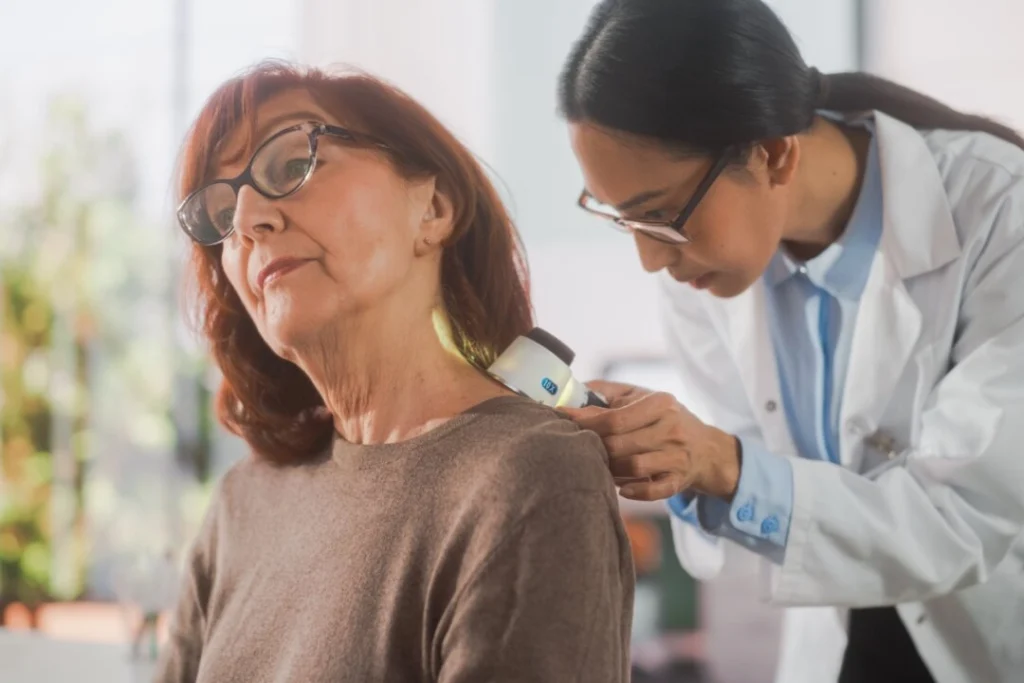
Shutterstock
Conventional medicine offers little hope in the fight against deadly malignant melanoma, but multiple foods, botanicals, and vitamins can help.
Article from Epoch Health & Wellness Corner By Ali Le Vere and GreenMedInfo
Cutaneous malignant melanoma, one of the most aggressive types of tumors, accounts for 75 percent of deaths due to cancer, and its incidence is on the rise worldwide (1, 2). In North America, it has become the most prevalent form of cancer for the demographic aged 25 to 29 (3). When detected early, surgical excision of the primary site is the standard of care. However, metastatic melanoma, wherein the tumor cells detach from the primary growth and disseminate to distant organs, is notoriously resistant to conventional radiation, immunotherapy, and chemotherapy (3).
Even after surgical removal, recurrence is a distinct possibility, and therapies employed by the biomedical paradigm have limited success (4). Commonly employed treatments include the DNA alkylating chemotherapeutic agent dacarbazine, which has response rates of 10 percent to 26 percent, most of which are partial and accompanied by side effects including anemia, nausea, neutropenia, and thrombocytopenia (5). More selective therapies, such as BRAF inhibitors, targeted for the small percentage of advanced melanoma patients with a genetic BRAF V600 mutation, are associated with widespread resistance and the development of other cancers, including keratoacanthoma and squamous cell carcinoma (6).
For metastatic melanoma, the five-year survival rate is dismal at less than 25 percent (6). However, there are evidence-based natural substances supported by the scientific literature for their anti-melanoma effects, which may be used as an adjunctive approach alongside other multipronged strategies.
Dandelion
Although regarded in modernity as a pesky garden weed, dandelion, or Taraxacum officinale, has long been a staple of traditional Chinese, Middle Eastern, and Native American folk medicine (3, 7, 8). It has been used by traditional medical systems for digestive, kidney, liver, and spleen disorders, as well as tumors of the lung, breast, and uterus (7). Dandelion is renowned in holistic medicine as a detoxifying agent, but it is also an anti-inflammatory, antioxidant, anti-angiogenic (prevents the growth of blood vessels that supply tumors with nutrients), anti-nociceptive (attenuates sensation of pain), and anti-cancer (3).
Studies have demonstrated that dandelion transforms mouse melanoma cells from a proliferative phenotype, which epitomizes the profligate cell division of cancer growth, to a differentiated phenotype representative of restoration of a normal cell cycle (9, Salem et al., 2004). Lupeol-a, the triterpene compound in dandelion found to elicit this effect, is cytostatic, meaning it inhibits cell growth and multiplication (9).
Taraxacum japonicum, a species of dandelion native to Japan, has also been shown to suppress two stages of carcinogenesis, tumor initiation and promotion (10). It was concluded that a triterpenoid compound called taraxasterol within dandelion is chemopreventative, meaning an agent that slows or prevents the development of cancer (10). In an in vitro study, researchers propose that dandelion root extract represents a novel chemotherapeutic agent, as it selectively induced apoptosis, or programmed cell death, in human melanoma cells while preserving noncancerous cells (3). Not only do healthy cells remain unaffected, but “melanoma cells retain the signals to commit suicide long after [dandelion root extract] has been removed from the system” (3).
According to researchers, various compounds in dandelion root, including triterpenes, sesquiterpenes, coumarins, and phenolic compounds, likely work synergistically to invoke anti-cancer effects (3). They conclude: “We believe that this nontoxic extract can undergo precipitous translation from bench top to bedside, with dandelion products that are already commercially available in the form of tea and supplements … as a chemotherapeutic against aggressive chemoresistant cancers” (3). For those with ragweed allergies, however, caution may be warranted because dandelion can be crossreactive since they both reside in the Asteraceae (Compositae) family.
Coffee
UV-induced sunburn lesions, which represent a potent risk factor for melanoma, are inhibited by caffeine, which elicits a sunscreen-like effect in rodent studies (1). Not only does caffeine suppress growth of melanoma cells in vitro and in vivo, but it also upregulates cell suicide, also known as apoptosis, induced by UV exposure (1). This effectively enhances the clearance of defective, precancerous cells (1). Read more